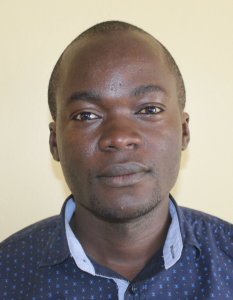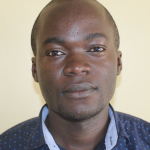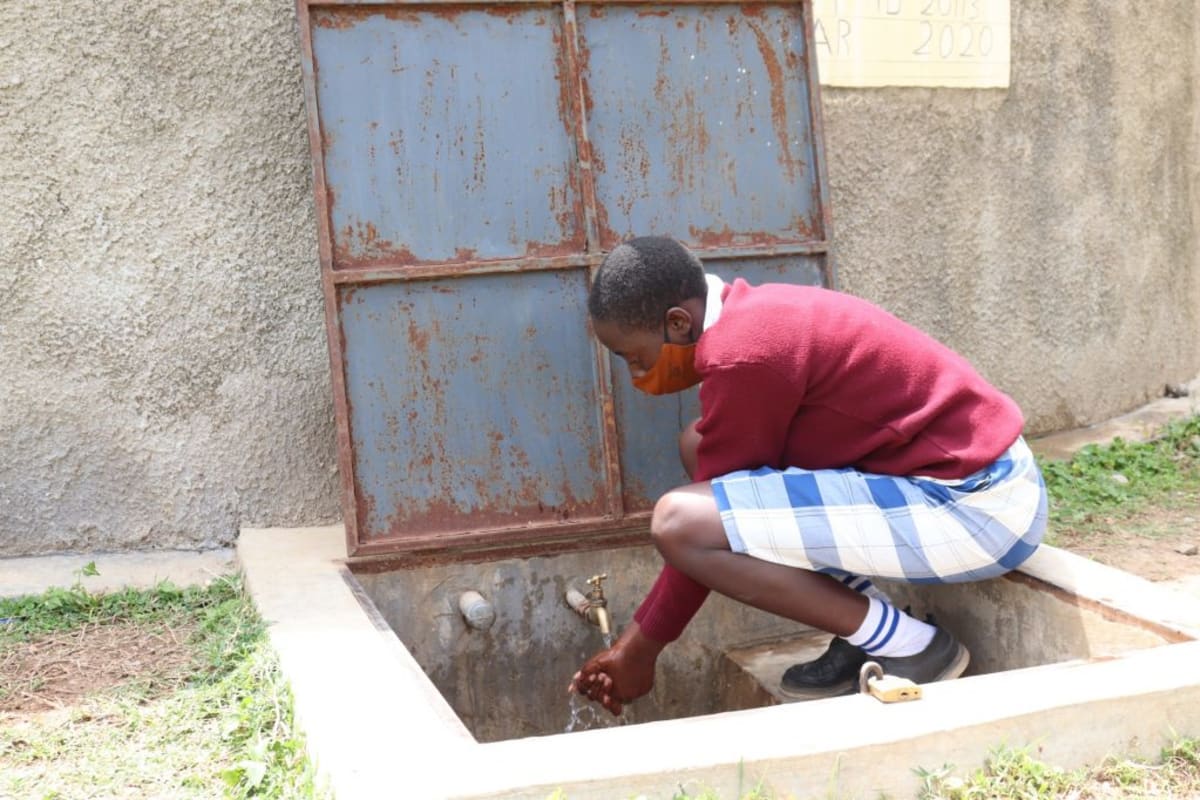"The school is in a bad state and most of us are not accessing clean and safe water. We are suffering from waterborne diseases after using the unsafe water."
This is the simple yet powerful evaluation of her school's current situation by teacher Mrs. Damaris Nashimiyu at Friends Secondary School Shirugu. Here, this is just 1 water source - a well - on school grounds that does not provide enough water, let alone safe water, for the 160 students and 16 teachers and staff.
To fetch water from the well, students must stand over the slippery cement pad surrounding the opening, lower a bucket on a rope into the water, and haul it back up. The water is then poured into their own containers before carrying these back to the school buildings. There is also a plastic storage drum that the students will fill at the well, then using a team of 6-8 students slug back to the center of campus. This process is tiresome and time-consuming. Looking down into the well, we noted dirty objects floating on the surface of the water - not a good sign when evaluating the safety of the water.
When the well runs dry, students are sent out between classes and during lunch to fetch water from an unprotected spring down in the village. This water is open to contamination and known for causing diseases. These trips waste a lot of precious school time and often make students too tired to pay attention in class once they get back.
Many students contract infections through the water they consume at school, impacting their families since they must use the little resources they may have in seeking medical treatment for their children. Waterborne illnesses drive absenteeism, and with it drag down students' academic performance.
The water shortage at this school also means that students' hygiene and sanitation are wanting. Water has to be prioritized for drinking, so healthy habits like handwashing and important chores like cleaning the latrines have to be put on hold.
"Really the school is in need of water to avoid the problems of stomachaches and time wastage among students. Secondly, students are missing classes when they contract diseases caused by dirty water," said teacher Mr. James Malenya.
What we can do:
Rain Tank
A 75,000-liter rainwater catchment tank will help alleviate the water crisis at this school. The school will help collect the needed construction materials such as sand, bricks, rocks, and water for mixing cement. We will complement their materials by providing an expert team of artisans, tools, hardware, and the guttering system. Once finished, this tank will begin catching rainfall that will be used by the school’s students and staff for drinking, handwashing, cooking, cleaning, and much more.
We and the school strongly believe that all of these components will work together to improve standards at this school, which will help lead to better student academic performance and will help unlock the opportunity for these students to live better, healthier lives.
Handwashing Stations
There is currently nowhere for students to wash their hands after using the latrines or before eating lunch, let alone the water to do so.
The student health club will oversee the 2 new handwashing stations we will provide, and make sure they are kept clean and in working condition. The club leaders will fill the handwashing stations with water daily and make sure they are always supplied with a cleaning agent such as soap or ash.
VIP Latrines
The latrines at Friends Secondary School Shirugu are in rough shape. Some of them cannot ensure privacy to users because they lack doors, while others have leaking roofs. All of them are producing a very bad odor.
2 triple-door latrine blocks will be constructed with local materials that the school will help gather. 3 doors will serve the girls while the other 3 will serve the boys. All of these new latrines will have cement floors that are designed to be easy to use and to clean. And with a rain tank right on school property, there should be enough water to keep them clean.
Training
We will hold a 1-day intensive training on improved hygiene, health, and sanitation habits at this school. Our team of facilitators will use a variety of methods to train students and staff, including participatory hygiene and sanitation transformation (PHAST) and asset-based community development (ABCD). We will initiate a child-to-child (CTC) student health club, which will prepare students to lead other pupils into healthy habits at school and at home. We will also lead lectures, group discussions, and provide illustrative handouts to teach health topics and ways to promote good hygiene practices within the school. We will then conduct a series of follow-up trainings before transitioning to our regularly scheduled support visits throughout the year.

 Rainwater Catchment
Rainwater Catchment
 Rehabilitation Project
Rehabilitation Project











































